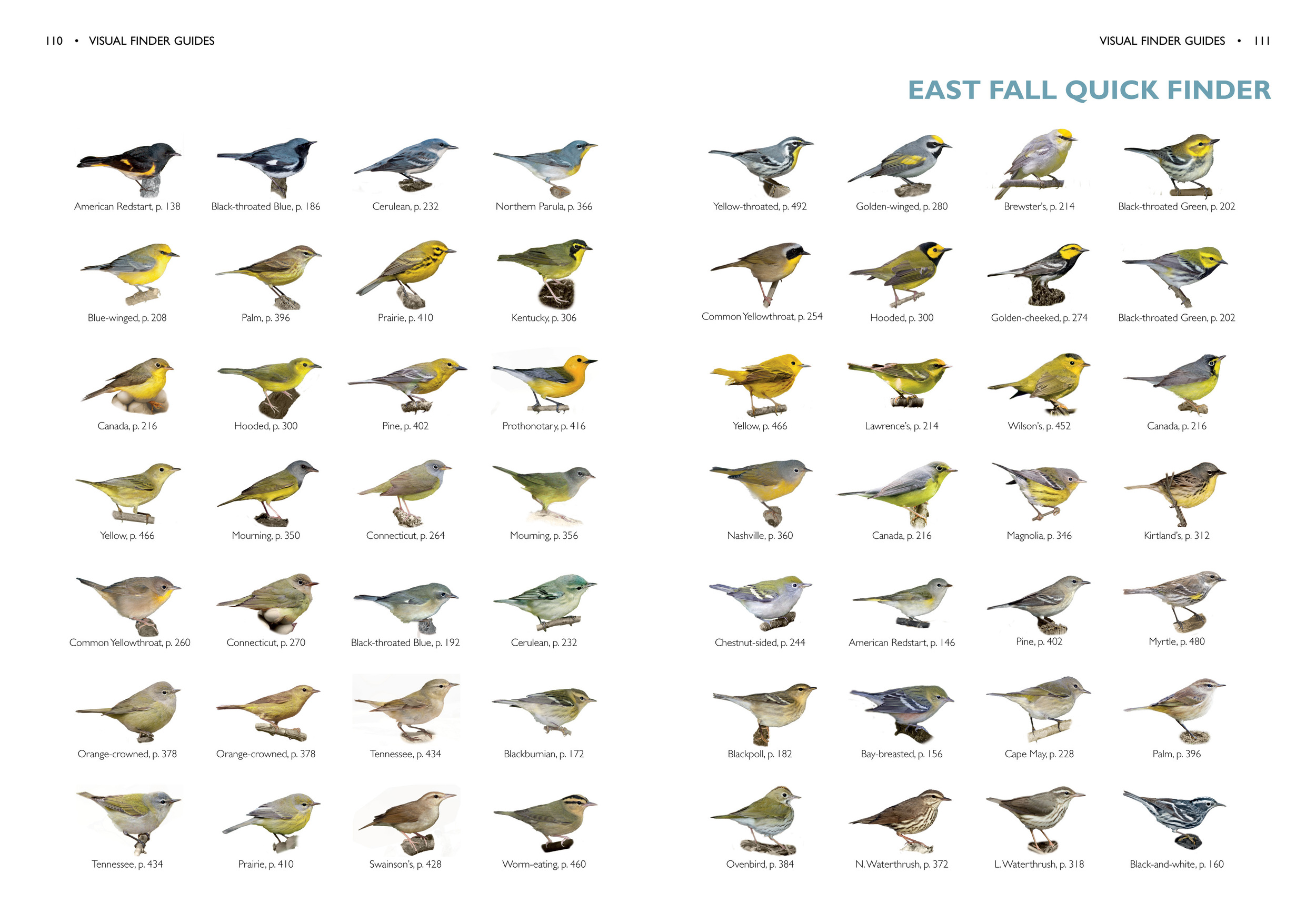Visual Quiz: Bird on the Ground Answered
/Our Quiz Bird
Let’s look at the Warbler Guide Finders to narrow this one down. There are a number of birds with yellow in them...so let’s see if there are any other features we can find in our bird that will help us with our identification.
The finders show a number of yellow birds - what else can we look for?
Let’s work from head to tail ... On the head we see a pronounced supercilium (eyebrow)...that should be helpful! There’s a tinge of brown on the crown, too. The upperparts of the back are brownish - and look at those wings...there are wing bars but they’re brown, which might be another useful point. The underparts are patchy yellow, and the rump and undertail are also yellow (brighter in the undertail).
Some useful marks include a wide supercillium, brown in the crown and wings, brownish wing bars, patchy yellow in the body, and a yellow rump and undertail.
So let’s look again at the finders...there are quite a few birds that are drab yellow with a strong supercilium. I see Palm, Prairie, Hooded, Tennessee, Orange-crowned, Blackburnian, Worm-eating, Swainson’s, Blackpoll, and Yellow-rumped (Myrtle). Out of these, which have yellow in the body or undertail? Just Palm, Prairie, Hooded, Orange-crowned and possibly Blackpoll. Great! We’re beginning to narrow down our search.
Only a few species have a supercillium and are drabish-yellow like our quiz bird.
Let’s turn to some of the other features such as the brown wing bars, and the yellow upper and undertail areas. Based on these few additional ID points, it looks like Palm must be our choice.
If I go to the Palm Warbler account, I see, in fact, that the points we observed are a unique combo...and combined with tail-pumping, looks like a really good match. On the comparison species page for Palm we can see any other possible candidates.
Our Palm Warbler comparison page confirms the ID.
Looking at the comparison species, the only possibly close choice is Prairie...but notice that the wing bars are yellow, not brown; the streaking is black as opposed to reddish-brown; and the Prairie has a distinct facial pattern that is different from Palm’s.
The answer, in fact, is fall Palm Warbler. These birds are often seen feeding on the ground, and also in small flocks. Their continuous tail-pumping is a great tip-off, too, and although there are some other tail-pumping warblers (the Waterthrushes, Magnolia, Prairie and Kirtland), the flocking, yellow undertail and rump, brownish wing bars (and often crown) and brown breast streaks, when present, all point to Palm Warbler.





